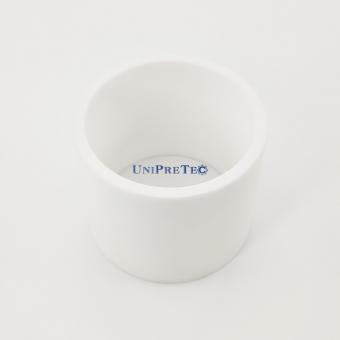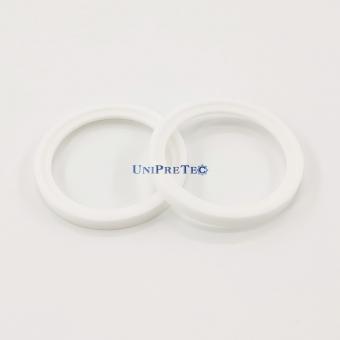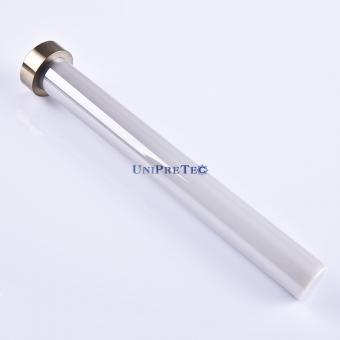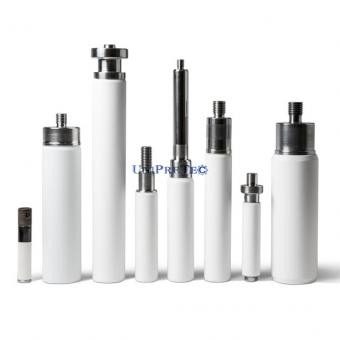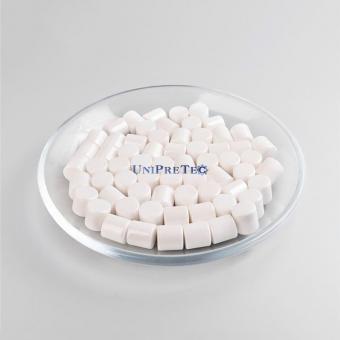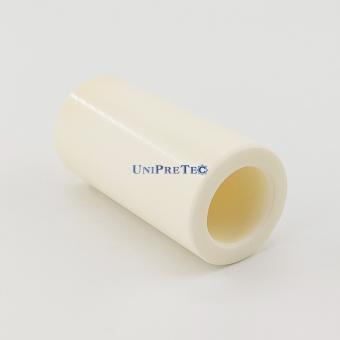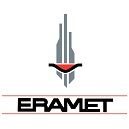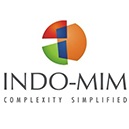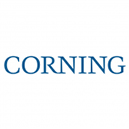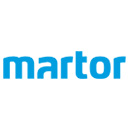In the semiconductor industry, equipment investment accounts for 60%-70% of the capital expenditure of the semiconductor industry. Among them, the wafer manufacturing process is complex and diverse, and the value of related equipment accounts for a very high proportion, reaching more than 50% of the total capital expenditure. The development of semiconductor equipment has become the engine driving technological innovation and progress in the semiconductor industry.
For the development of semiconductor devices, the material used in the components is a key factor affecting the performance of the device. Especially for the etching machine and PECVD equipment in the wafer manufacturing process, the plasma will cause serious corrosion to the surface of the equipment and devices through physical action and chemical reaction. The reaction products generated during the corrosion process will volatilize and fall off, and impurity particles will be generated in the manufacturing chamber, which will affect the cleanliness of the chamber.
How to deal with the problem of plasma corrosion?
Generally, a high-purity Al2O3 coating can be used as a protective material for the etching cavity and the components in the cavity. However, with the decrease of the minimum feature size of semiconductor devices and the increase of the wafer size, in order to obtain higher etching accuracy and ensure the uniformity of etching, the plasma energy is gradually increased, and halogen gases have begun to be used for plasma etching. High-energy fluorine-containing plasma has high chemical activity, and easily reacts with Al2O3 to form AlxFy compounds, which are deposited on the inner wall of the process chamber or on the surface of components, and finally fall off into particles during the plasma etching process, contaminating the wafer, reducing the yield and increasing the cost of production.
Therefore, the plasma etch resistance of the etcher cavity and cavity component materials becomes critical.
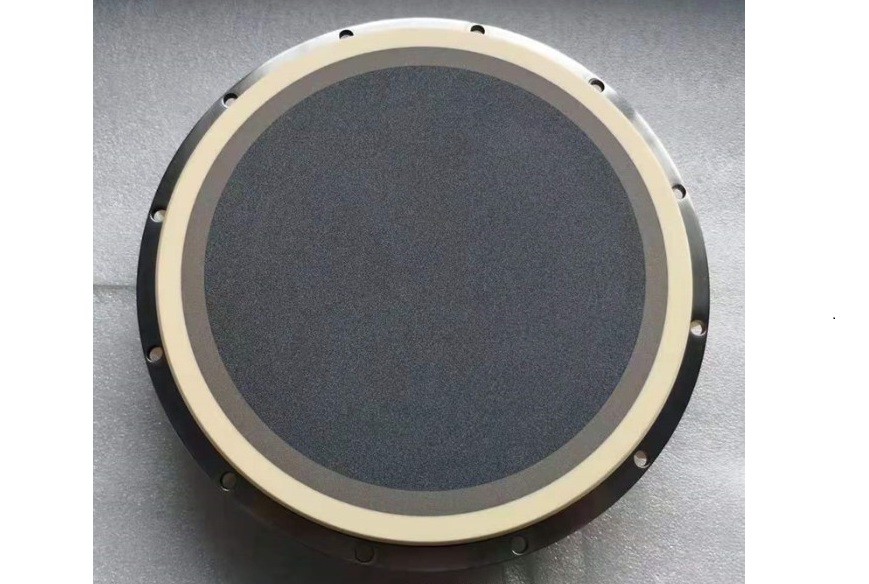
Quartz material
Quartz is an inorganic non-metallic material with stable physical and chemical properties, and its crystal structure belongs to the trigonal crystal system. At the same time, due to the use of F-containing plasma in the etching process, F easily reacts with quartz to form SiF4. Therefore, the etching phenomenon of the plasma on the cavity is relatively serious, and the service life of the plasma etching machine cavity material is greatly limited.
SiC material
Silicon carbide is an inorganic non-metallic material with stable chemical properties, high thermal conductivity, small thermal expansion coefficient and excellent wear resistance. SiC is used as the cavity material of the etching machine. Compared with quartz, the material itself produces less impurity pollution. Due to its more excellent mechanical properties, when the plasma bombards its atomic surface, the atomic loss rate is relatively small. Mitsui Co., Ltd. A SiC composite material is reported as a cavity material for an air etching machine, which has high corrosion resistance.
Anodized aluminum and high-purity Al2O3 materials
When the etching machine chamber material is selected from aluminum alloy, it is easy to cause metal particle pollution. Instead, a dense anodic aluminum oxide layer is selected on the aluminum alloy, and the corrosion resistance of the chamber material is improved by anodic oxidation. It has been found in practice that the anodized aluminum layer is prone to peeling off. This is mainly due to the segregation of impurities in the alloy, and the anodic alumina layer on the surface is prone to microcracks, which makes the service life of the anodic alumina low. Therefore, high-purity alumina ceramics are prepared as the chamber material.
As a plasma etching resistant cavity material, it has the following characteristics.
(1) The production equipment is simple, the degree of automation is high, and the cost of the production process is low.
(2) Since halogen gas is usually used for high-speed etching of Si wafers, Al easily reacts with halogen F and the like to generate volatile Al-F by-products and contaminate the wafer.
(3) The addition of metal phase impurities significantly reduces its hardness and flexural strength.
(4) At high temperature, the nanocrystalline grains are easy to grow, and the thermal conductivity decreases.
(5) In the gradient coating, the delamination effect is aggravated.
(6) Can not meet the requirements of etching equipment above 300mm.
Y2O3 material
As a cavity material for Si wafer etching, yttrium oxide has the following advantages and disadvantages compared with Al2O3.
(1) Surface particle and defect contamination caused by Y2O3 is reduced due to the elimination of AlF3.
(2) The low content of transition metals in the material reduces the risk of metal contamination.
(3) Y2O3 has more excellent dielectric properties, and the thicker the Y2O3 ceramic coating, the stronger the resistance to dielectric breakdown.
(4) As a plasma-resistant cavity material, the corrosion rate is low in plasma.
(5) The use cost is low, but the preparation cost is high.
(6) The thermal expansion coefficient is larger than that of Al2O3. During the corrosion process, the residual stress at the grain boundary is prone to expansion, so pores and micro-cracks are more likely to occur inside.
Single crystal YAG and Al2O3-YAG eutectic composites
YAG is abbreviated as yttrium aluminum garnet. It has cubic crystal structure, no birefringence effect, low high temperature creep, and excellent optical and electrical properties. It is widely used in laser matrix materials, high temperature visible light windows, plasma chamber materials and infrared window materials. Wait.
As an important heat-resistant and plasma-impact-resistant material, YAG has attracted the attention of researchers and some related equipment manufacturers in recent decades. Compared with Y2O3 ceramics, it has the following characteristics.
(1) The service life is long and the cost of use is relatively low.
(2) The preparation process is simpler and the cost is low.
(3) More excellent mechanical properties.
(4) Low melting point, easy processing, etc.
Al2O3-YAG composite ceramics are prepared from Al2O3 and Y2O3 nano-powders in a certain ratio through ball milling, mixing, drying, molding, sintering and other processes.
Compared with single crystal YAG, it has good application prospects in terms of plasma etching resistant cavity wall materials. According to the current relevant research reports, it has the following advantages compared with other corrosion resistant cavity materials.
(1) Excellent mechanical properties.
(2) High thermal conductivity.
(3) Excellent creep resistance at high temperature.
(4) The production cost is relatively low.
(5) Good resistance to plasma etching.
Si3N4 material
As a covalent bond compound, Si3N4 has low thermal expansion coefficient, high thermal conductivity, excellent resistance to chemical corrosion and thermal shock. The hot-pressed Si3N4 has extremely high hardness and high temperature resistance. Its strength has been maintained at a high temperature of 1200 °C without decreasing. It will not melt into a molten body after being heated, and will not decompose until 1900 °C.
The hot-pressed sintered silicon nitride will not break even when it is heated to 1000℃ and put into cold water. However, as a plasma etching cavity material, it still has the following shortcomings:
(1) The machining cost is high, which has exceeded half of the total product cost.
(2) Mechanical processing damages the surface of the material, which is detrimental to the strength of the material.
(3) In order to avoid the negative impact of mechanical processing on material properties, excessively conservative processing conditions are usually used in manufacturing, which greatly prolongs processing time and reduces production efficiency.
(4) As a non-oxide ceramic material, large-sized sintered body is difficult to prepare, and its preparation cost is high







